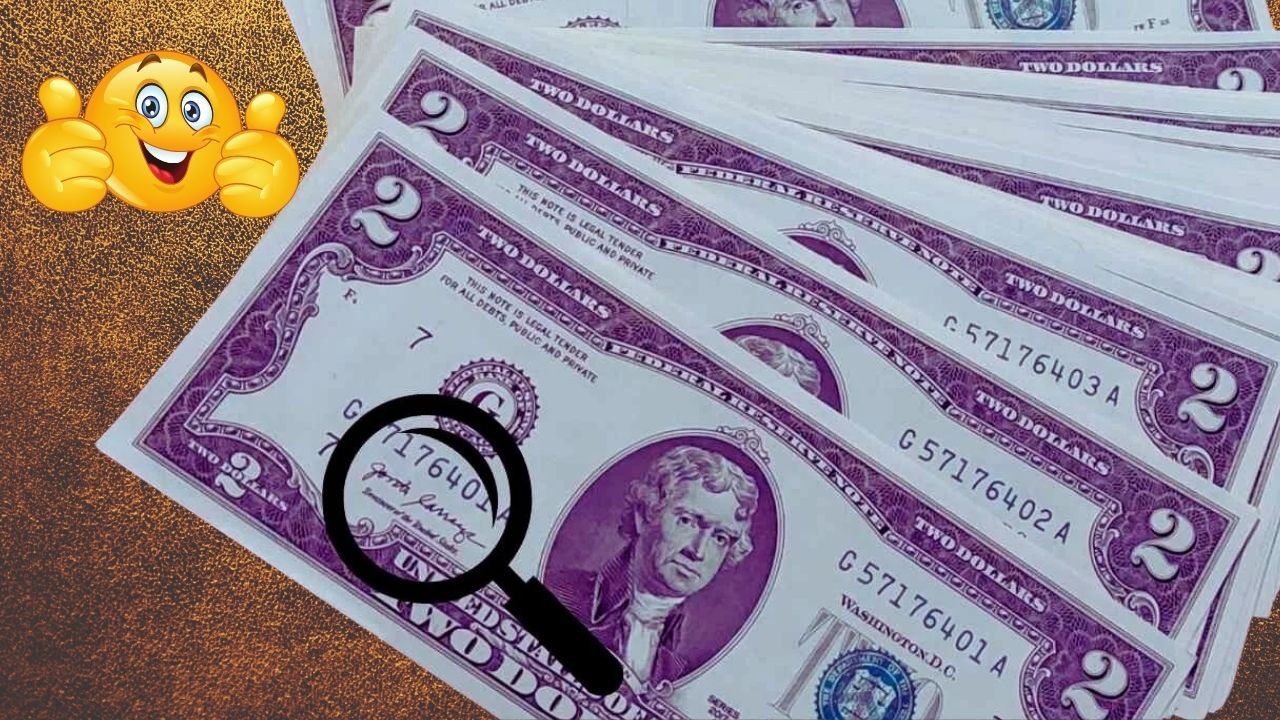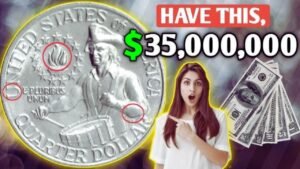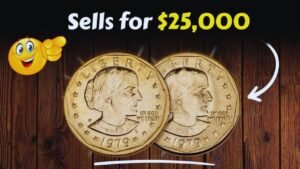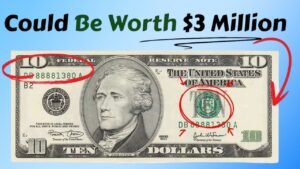The 1976 $2 bill is a fascinating piece of American history. Released to celebrate the nation’s 200th birthday, these bills are more than just pocket change. Some rare ones could be worth thousands—or even millions! Let’s dive into what makes these bills special, how to spot a valuable one, and where to cash in if you strike gold.
Why the 1976 $2 Bill Is Special
A Bicentennial Treasure
In 1976, the U.S. minted the Bicentennial $2 bill to honor 200 years of independence. It features Thomas Jefferson on the front and a vibrant depiction of the Declaration of Independence signing on the back. Over 590 million were printed, making most worth just their face value of $2. But certain rare versions are collector’s dreams.
A Growing Craze
With America’s 250th anniversary nearing in 2026, interest in these bills is skyrocketing. Collectors and everyday folks are rummaging through old boxes, wallets, and family heirlooms. Why? A single bill with the right features could change your life.
What Makes a 1976 $2 Bill Valuable?
Rare Serial Numbers
The serial number on the bill’s front is key. Certain patterns make a bill highly sought-after:
- Repeater Serials: Numbers like 45454545 can fetch $12,000 to $100,000 in pristine condition.
- Ladder Serials: Sequential numbers like 12345678 are rare and can sell for $5,000 or more.
- Low Serials: Numbers like 00000001 are extremely valuable, sometimes hitting $10,000+.
- Star Notes: Bills with a star (*) in the serial number are replacements for errors and can be worth $50 to $2,000.
Printing Errors
Mistakes during printing can skyrocket a bill’s value. Look for:
- Double Serial Numbers: A bill with two printed serials can sell for $20,000+.
- Misaligned Seals: Off-center seals or blurry ink can make a bill worth thousands.
- Overprints: Extra ink or overlapping designs are rare and valuable.
Condition Matters
Collectors prize uncirculated bills—those without folds, tears, or stains. A crisp bill with a rare serial number could be worth 10 times more than a worn one. For example, a pristine repeater serial bill sold for $88,000 at auction.
Federal Reserve Bank Marks
Each bill has a letter indicating its Federal Reserve Bank. Bills from Minneapolis (“I”) or Kansas City (“J”) are rarer and often worth more. A Minneapolis star note in great condition might fetch $500 or more.
| Feature | Details | Potential Value |
|---|---|---|
| Repeater Serial | Numbers repeat (e.g., 56565656) | $12,000–$100,000 |
| Ladder Serial | Sequential numbers (e.g., 12345678) | $5,000–$15,000 |
| Low Serial | Starts with 0000000X (e.g., 00000001) | $2,000–$20,000+ |
| Star Note | Has a star (*) in serial number | $50–$2,000 |
| Printing Error | Double serial, misaligned seals, overprints | $1,000–$35,000+ |
| Federal Reserve Bank | Minneapolis (“I”), Kansas City (“J”) | $50–$500+ |
| Condition | Uncirculated, no folds or stains | Up to 10x circulated value |
How to Check Your 1976 $2 Bill
Step 1: Examine the Serial Number
Look at the green serial number on the front. Check for:
- Repeating patterns (e.g., 34343434).
- Sequential numbers (e.g., 12345678 or 87654321).
- Low numbers starting with multiple zeros.
- A star (*) at the start or end of the serial.
Step 2: Inspect for Errors
Hold the bill up to light. Look for:
- Double-printed serial numbers or seals.
- Blurry or misaligned ink.
- Any unusual markings or overprints.
Step 3: Assess Condition
Is the bill crisp and clean? Bills with no creases, tears, or stains are worth more. Store valuable bills in a protective sleeve to maintain their condition.
Step 4: Identify the Federal Reserve Bank
Check the letter on the front (e.g., “I” for Minneapolis). Rare banks increase value, especially for star notes.
Step 5: Get It Appraised
If you suspect your bill is rare, consult a professional. Services like PCGS (Professional Coin Grading Service) or PMG (Paper Money Guaranty) can grade your bill. A certified grade can boost its auction price significantly.
Where to Sell Your Valuable $2 Bill
Trusted Auction Houses
Auction houses like Heritage Auctions or Stack’s Bowers specialize in rare currency. They attract serious collectors willing to pay top dollar. For example, a bill with a low serial number sold for $35,250 at Heritage Auctions.
Online Platforms
Sites like eBay are popular for selling rare bills. Use clear photos and detailed descriptions to attract buyers. Always verify buyer credibility to avoid scams.
Local Coin Dealers
Visit a reputable coin shop in your area. They can appraise your bill and may buy it directly or connect you with collectors.
Tips for Selling
- Get your bill graded by PCGS or PMG for credibility.
- Research recent sales of similar bills to set a fair price.
- Avoid spending or damaging a potentially valuable bill.
- Be cautious of lowball offers or unverified buyers.
Why These Bills Are a Collector’s Dream
A Piece of History
The 1976 $2 bill captures a moment in time—America’s Bicentennial celebration. Its unique design, featuring the Declaration of Independence, makes it a nostalgic treasure.
Rising Interest
As the 250th anniversary approaches in 2026, collectors are snapping up these bills. Stories of people finding rare bills in attics or old books are fueling the hunt. One lucky person found a star note worth $1,500 in a family safe!
Investment Potential
Rare $2 bills are more than collectibles—they’re investments. A bill bought for $2 in 1976 could now be worth thousands. With demand growing, their value may climb higher.
FAQs About 1976 $2 Bills
1. Are all 1976 $2 bills valuable?
No, most are worth $2 unless they have rare serial numbers, printing errors, or are in uncirculated condition.
2. How do I know if my $2 bill is a star note?
Check the serial number for a star (*) at the beginning or end. These replacement notes are rarer and often more valuable.
3. What’s the best way to store my $2 bill?
Use acid-free plastic sleeves or currency holders to prevent damage. Avoid tape, staples, or folding.
4. Can I sell my bill without grading it?
Yes, but grading by PCGS or PMG increases buyer trust and can raise the sale price significantly.
5. Where can I find more information on rare bills?
Visit websites like PCGS.com, PMGnotes.com, or HeritageAuctions.com for guides and auction records.
Start Your Treasure Hunt Today
The 1976 $2 bill is a hidden gem waiting to be discovered. Whether it’s tucked in an old wallet or buried in a drawer, your bill could be worth a fortune. Check those serial numbers, inspect for errors, and get an appraisal if you spot something special. With the 250th anniversary approaching, now’s the perfect time to hunt for these Bicentennial treasures. Who knows? Your $2 bill might just make you a millionaire!




